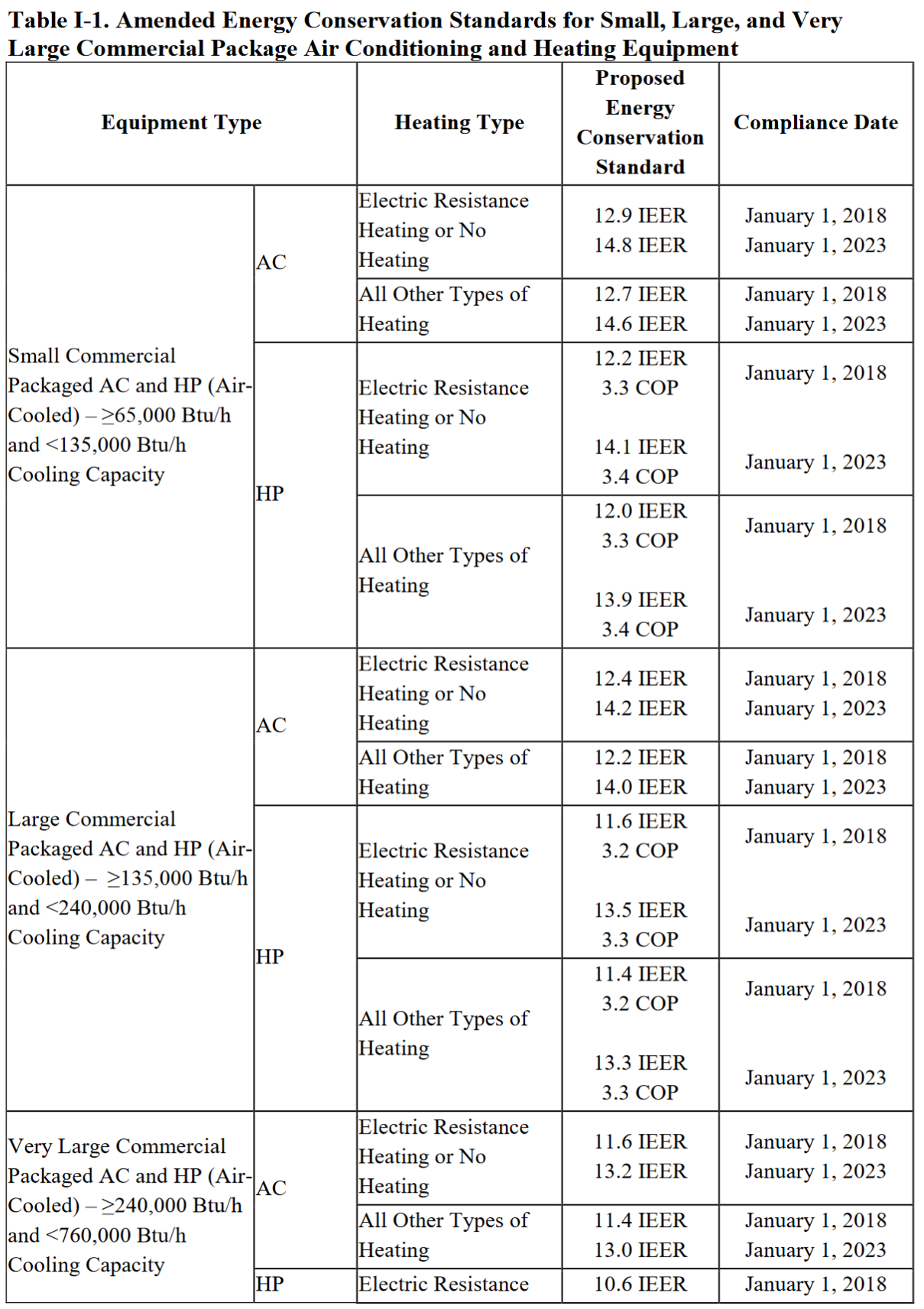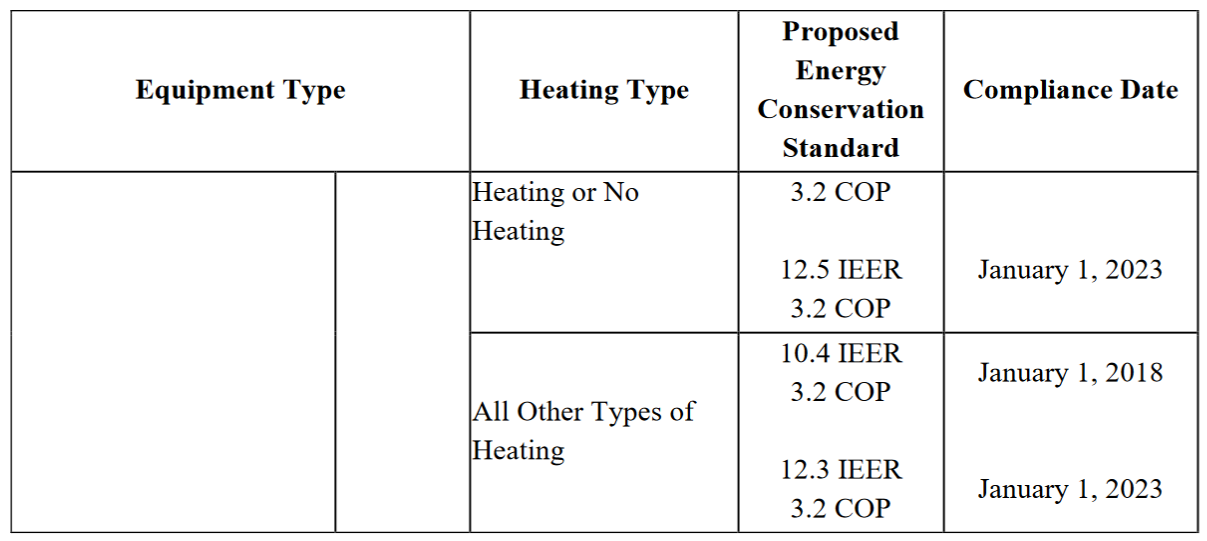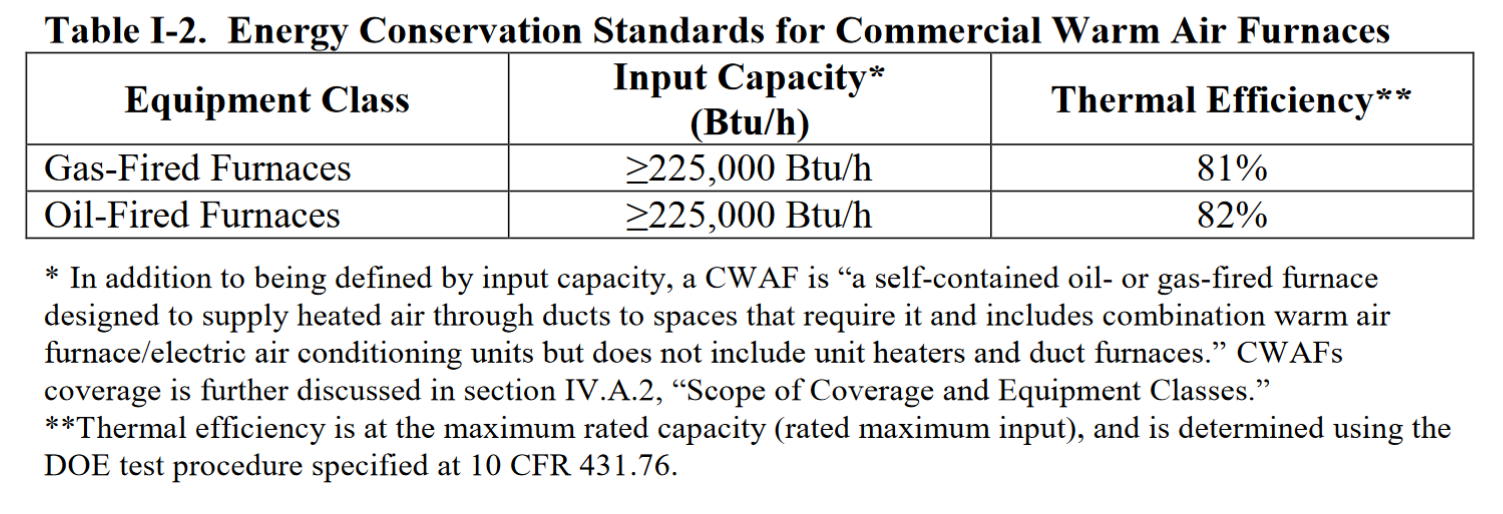The United States Department of Energy (DOE) establishes energy-efficiency standards for certain appliances and equipment, and currently covers more than 60 different products.
The Appliance and Equipment Standards Program issues regulations on test procedures, and for the implementation, certification, and enforcement of the standards.
As defined in the Code of Federal Regulations (CFR), small, large, and very large commercial package air conditioners and heat pumps are air-cooled, water-cooled, evaporatively-cooled, or water source unitary air conditioners and heat pumps that are used for space conditioning of commercial and industrial buildings.
Manufacturers of this equipment have been required to comply with the U.S. Department of Energy (DOE) energy conservation standards for small, large, and very large commercial package air conditioners and heat pumps since 1992.
The newest equipment efficiency standards went into effect January 1, 2018 and changed the way manufacturers engineer commercial rooftop air conditioners, heat pumps for buildings like retail stores, educational facilities and mid-level hospitals.
The purpose of the new standard is to improve RTU efficiency and cut energy usage and waste. These changes will save property owners a lot of money in the long run— but the 2018 mandates have presented some challenges for some HVAC manufacturers.
Phase One of the revised standard focused on energy-efficiency increases in all air conditioning RTUs by about 13 percent as of January 1, 2018. Phase Two, coming on January 1, 2023, will push the increases up to 30 percent (an additional 15 percent) and include warm-air furnaces, too.
Minimum standards for CUACs and CUHPs (air-cooled commercial unitary air conditioners and heat pumps) are shown in Table I-1 below, with the CUAC and CUHP cooling efficiency standards presented in terms of an integrated energy efficiency ratio (“IEER”) and the CUHP heating efficiency standards presented as a coefficient of performance (“COP”). The IEER metric would replace the currently used energy efficiency ratio (“EER”) metric on which DOE’s standards are currently based. This makes part-load energy efficiencies even more important in the new standard.
The standards will adopt ASHRAE 90.1-2013 efficiency levels in 2018 and a higher level in 2023 as recommended by the ASRAC (Appliance Standards and Rulemaking Federal Advisory Committee) Working Group. The standards contained in the recommendations apply to all equipment listed in Table I-1 manufactured in, or imported into, the United States starting on the dates shown in that table.
For CWAFs (commercial warm air furnaces), the amended standards, which prescribe the minimum allowable thermal efficiency (“TE”), are shown in Table I-2. These standards apply to all equipment listed in Table I-2 manufactured in, or imported into, the United States starting on January 1, 2023.
Some manufacturers in our industry have not changed their design and have continued to produce the same inefficient models for decades. With these new DOE standards closing in, time is running out. We are hearing that some manufacturers are having to pull their units off the market and put them through redesign to meet the new standards.
Fortunately for Air Equipment Company and our customers, our manufacturers are always striving to make their units more efficient and have been in full compliance with the DOE standards and ASHRAE guidelines since they were issued. Our partners recognized years ago that they must have a clear understanding of compliance with the new mandates and create new product designs to meet or exceed all of the new standards. Thanks to always striving to be the best, there will be no need for our equipment partners to stop production or delay ship dates in order to test equipment to confirm compliance.
If you have a project coming up, I would encourage you to start asking questions to your vendor or equipment representative now regarding their manufacturer’s compliance with the DOE Energy Regulations and if lead times will be effected.
Just because manufacturers are already able to meet DOE’s 2023 standard does not mean they are resting on their laurels. The best in the industry are continuing to innovate and prepare for the future on a daily basis.




